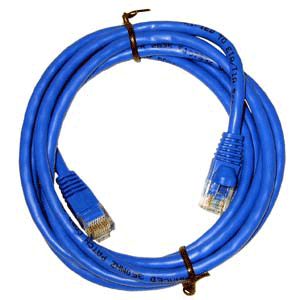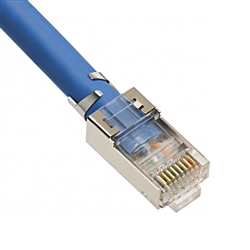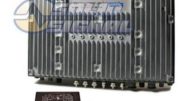Our intrepid readers are always a great source for material for this blog. There are always new questions to be answered. For example, one of our customers recently asked,
I was told that I needed 6 series cable. What is that and do I need it?
Well, you probably do, but it depends on what you mean, I guess. Let’s look at the two most likely things that could be called “6 series” cable.
RG6 cable

By definition, RG6 cable is coaxial cable designed for satellite TV use. RG6 is a designation that describes the following:
- Coaxial cable, meaning all the signal travels through the central wire
- 75 Ohm impedance
- A polyethylene dielectric with a capacitance of 20 picofarads per foot
- An outer diameter of .332 inches
- Outer braided shielding (may have other shielding as well)
These are technical designations. They don’t tell you how the cable fits into an installation. RG6 cables can be used for satellite, antenna, and cellular applications.
The RG6 spec doesn’t include a specific frequency range. RG6 cables commonly carry frequencies from 2-3000MHz. If you want to use these cables for satellite use, you should make sure they are sweep tested to 3000MHz.
Cables labeled RG6 can have a center wire made of solid copper, or copper-clad steel (CCS.) Cables with solid copper center conductors can carry a small amount of electricity, something less than 30 watts. These cables can carry power to your antenna, satellite dish, or any other device that needs that power. Not every antenna needs power. You may choose to use less-expensive CCS cable if you know you need an unpowered solution.
Shop for RG6 cables at Solid Signal.
Category 6 cable

Networking and communications applications use Category 6 cable. It describes a twisted pair cable with four wire pairs, terminating in RJ45 connectors.
Category 6 cable can be any color and can have “snagless” connectors like the ones you see above. Or the connectors can be bare like this:

Category 6 cable will handle speeds up to 10 gigabits per second. This is faster than virtually any device you will see in the average home or office. Less expensive Category 5e cables will handle the speeds seen in most homes or offices easily. However, there is often only a small difference in price between Category 5e and Category 6 and so people just figure they will be futureproof.
Shop for Category 6 cables at Solid Signal.
Are there any other “6 series” cables?
.jpg)
“6 series” is a term some manufacturers use for their brands of virtually anything. What you see above, for example, is a BMW 6-series automobile.
There is no standard for the term “6 series” and some manufacturers use it to describe almost anything. If you see the term “6 series” or if someone tells you that you need 6 series cable, look a little further and try to figure out what you really need.
Then of course, shop at Solid Signal to find the best selection of cables and accessories from our thousands of choices.





